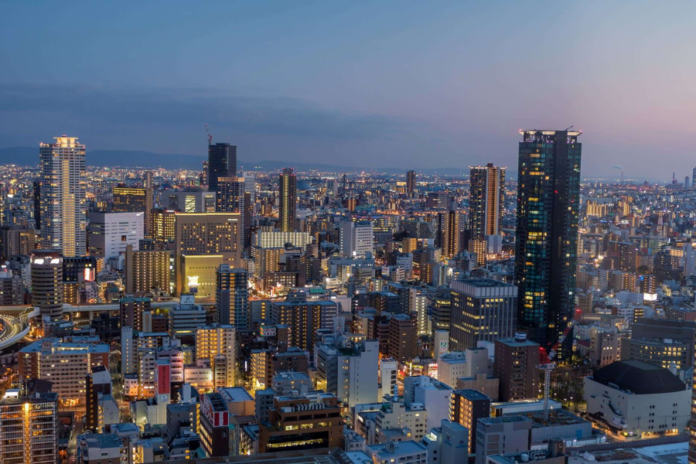Singapore is a global metropolis that frequently appears on “best” lists. Recent honours it has received include the fourth most competitive economy in the world (International Institute for Management Development), “best business environment” (EIU), “freest economy in the world” (The Heritage Foundation), and eighth place in Schroders’ global city index.
It came as little surprise that it did not place among the top ten cities in the most recent Economist Intelligence Unit (EIU) list of the world’s liveliest cities. However, the Southeast Asian metropolis managed to squeak into the top ten cities in the Asia-Pacific region in tenth position.
The highest global average score in 15 years was recorded by this year’s EIU liveability index, which offers a snapshot of the most and least desirable cities to live in. This indicates that living conditions have fully recovered from the COVID-19 pandemic, which disrupted lives and impacted lifestyles.
The index measures the quality of life in 173 cities based on five factors: infrastructure, stability, education, culture and environment, and healthcare.
Only the stability score decreased on average among the survey’s listed categories in 2023. While stability rankings in many eastern European cities increased this year after declining in 2022 due to their proximity to Ukraine, stability elsewhere declined.
Striking employees, demonstrations in several European cities, including France and Greece, as well as violent incidents in Israel and Peru all had a detrimental impact on stability rankings.
The EIU said that “inflation could lead to further falls in stability scores, and thus damage overall liveability scores, in many parts of the world over the next year.”
According to the indicator, cities in the Asia-Pacific area have recovered the most, accounting for eight out of the ten biggest upward movers. Wellington, New Zealand, increased by 35 positions to take 23rd, while Auckland increased by 25 positions to take 10th. Hanoi, Vietnam rose 20 spots to rank 129, while Kuala Lumpur, Malaysia advanced 19 spots.
Scores increased throughout Asia as a result of post-pandemic improvements in healthcare and education. Additionally, scores in Africa and the Middle East improved mostly due to these two variables.
For the fourth time in five years, the EIU ranked Vienna, the “City of Music” and “City of Dreams,” as the most liveable city on earth.
Vienna was praised in the Economist report for having a great balance of stability, culture, and entertainment, as well as dependable infrastructure. Copenhagen comes in second, a city of comparable size and many of the same traits. Third place went to Melbourne, a city that frequently ranks among the best. Sydney, a city in Australia, comes in fourth.
Vancouver is ranked fifth, Calgary is ranked seventh, and Toronto is ranked ninth in the top ten cities in the world. Zurich (ranked sixth), Geneva (joined seventh), Osaka (ranked tenth), and Auckland (joined tenth) are the other cities that made the top ten.
The drawback of living in these locations as an expat is that you shouldn’t count on getting any sort of “hardship” payment. The EIU created the liveability survey to assist businesses in determining hardship benefits for employees relocating to a new, perhaps less agreeable city.
In total, small to mid-sized cities make up nine of the top 10 cities. The top ten are all in wealthy nations, as are the majority of the top 50. Large cities that have high rates of crime, traffic, and density typically do worse.
Three of the ten cities that fell the furthest in the rankings—Edinburgh, Manchester, and London—and two of them—Los Angeles and San Diego—were located in the United Kingdom. New York dropped 10 points to 69th and London dropped 12 spots to 46th from a year ago.
According to the poll, the majority of Chinese cities were “generally stable when compared to the outcomes from last year.”
New Delhi, Mumbai, Chennai, and Bangalore, the four Indian cities included in the survey, are classified between positions 45 and 50 among Asia-Pacific cities.
The three least desirable cities to live in are Karachi, Port Moresby (Papua New Guinea), and Dhaka in the Asia-Pacific area. They have places 169, 168, and 167, respectively, in the overall ranking.
Damascus claimed the dubious distinction of being the least livable city in the world by placing last on the global table. For more than ten years, it has occupied this position in the index. Tripoli is one spot higher than Syria’s war-torn capital in position 172, despite having a score that is almost ten points higher.
Despite its attempts to shield itself from the war, Kyiv is also in the lowest 10. Because Russia invaded Ukraine while the data were being collected, it was taken out of the index in 2022. Due to Russian bombs, its infrastructure rating of 23.2 out of 100 is the lowest in the assessment.
“The shift towards normality after the pandemic has overall boded well for global liveability in 2023,” Upasana Dutt, head of the liveability index at EIU, said in a statement.
“Education has emerged stronger with children returning to schools, alongside a significantly reduced burden on hospitals and healthcare systems, with some notable improvements in cities across developing economies of Asia and the Middle East.”
“As the world’s political and economic axis continues to shift eastwards, we expect the cities in these regions to move slowly up our liveability rankings.”



